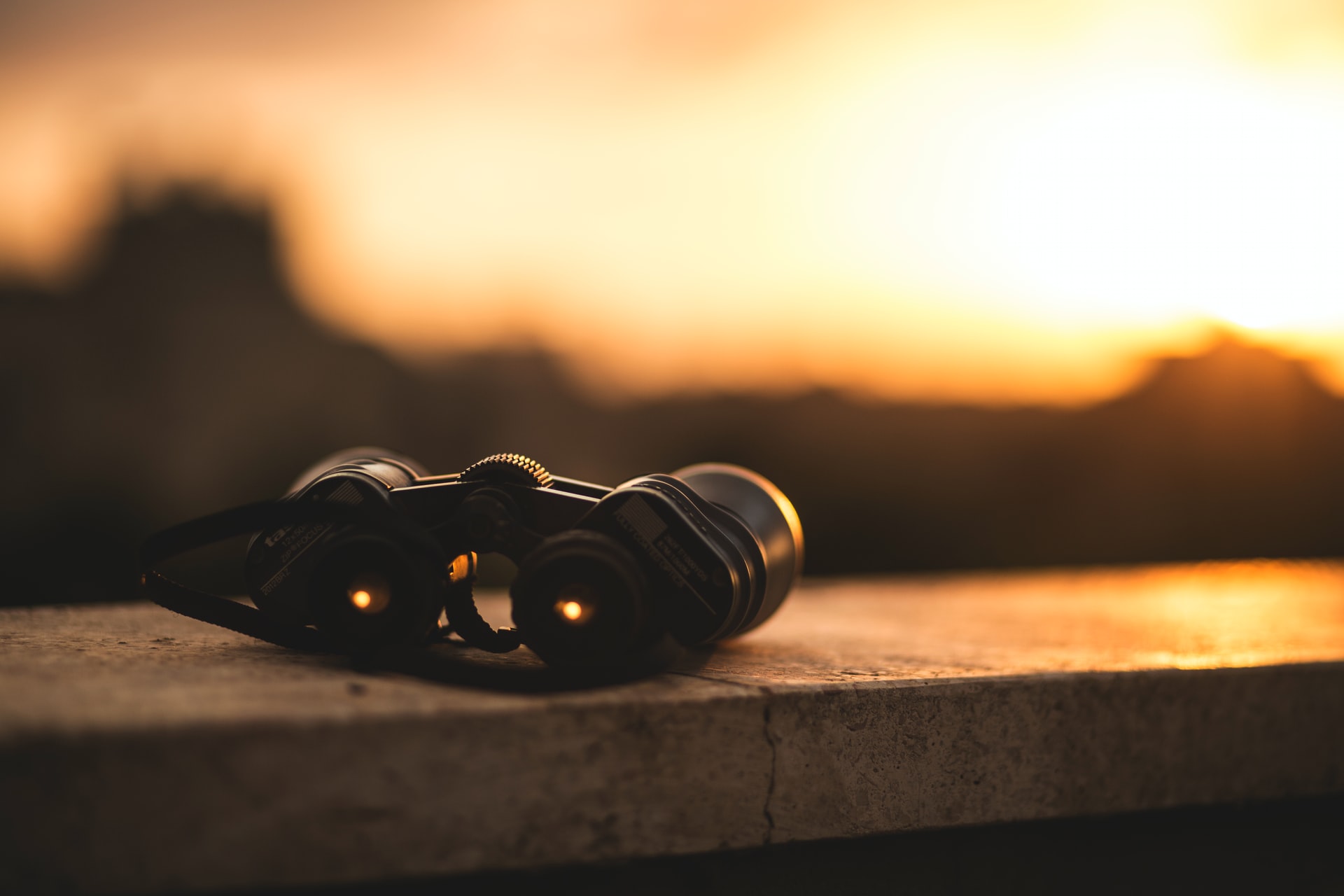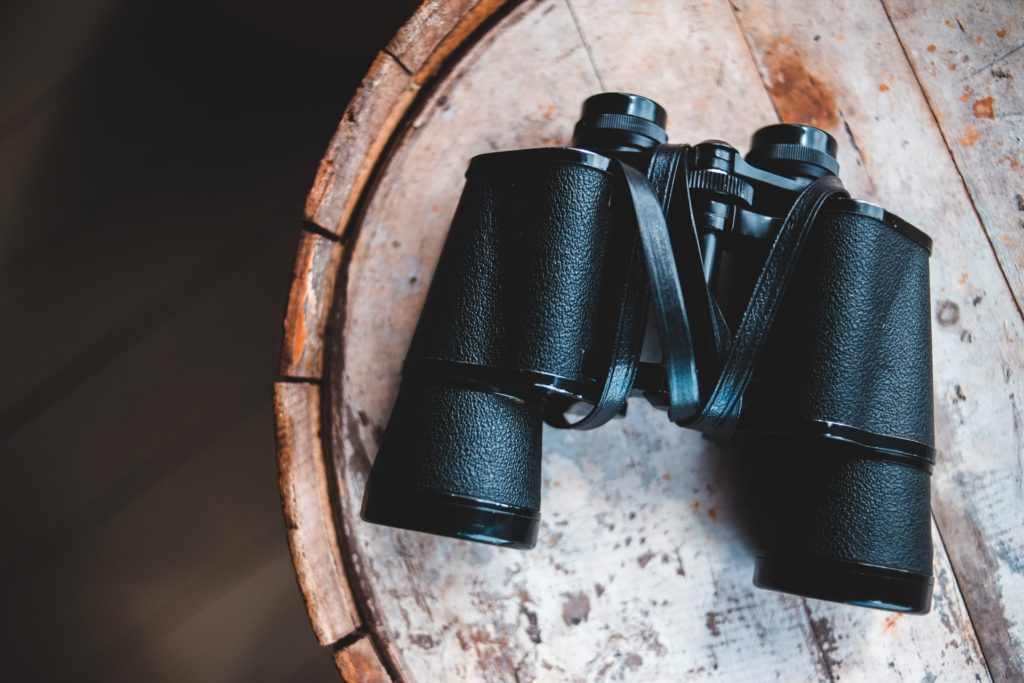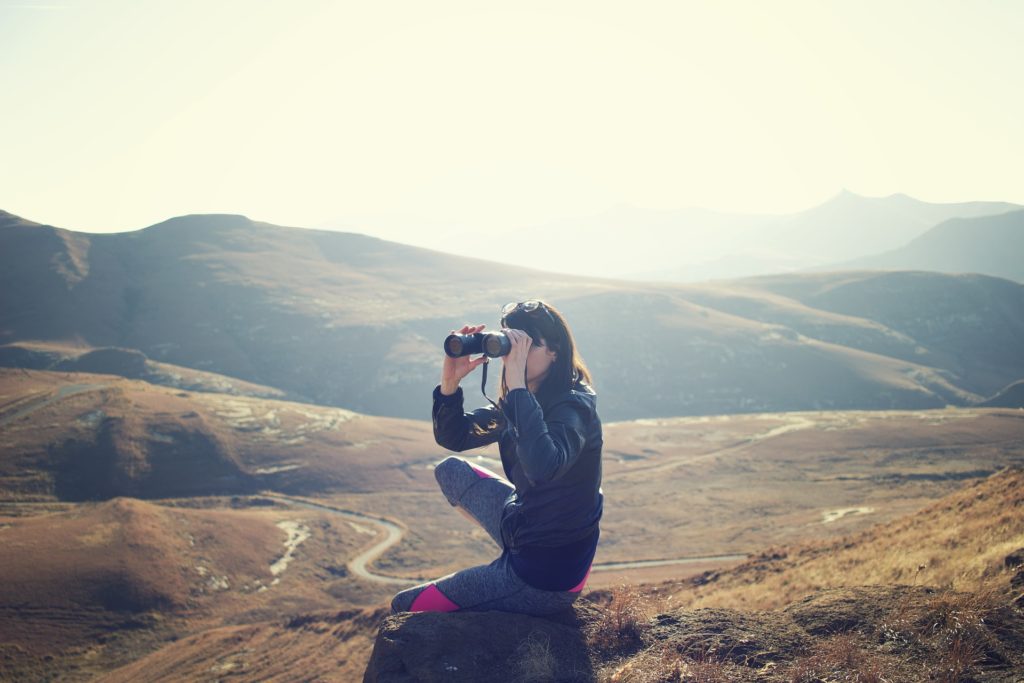Binoculars for Beginners: An Introductory Guide
This entry was posted on May 28, 2021.

Binoculars are a must for anyone into bird watching, wildlife or anything to do with the great outdoors.
Perfect for all kinds of days out (and more serious wildlife photo shoots), binoculars and telescopes allow you to get up close and personal with all kinds of wildlife in its natural habitat. But with such a huge range of ‘bins and scopes’ to choose from, knowing where to start can be tricky.
Nevertheless, getting to grips with the basics of binoculars can be surprisingly simple - and extremely satisfying.
In this guide, we’ll be taking an introductory look at the fundamentals of binoculars and telescopes for newcomers. And we’ll even take it a step further, and show you how to get the most out of your optics.
How Much Do Binoculars and Scopes Cost?
You can spend as much or as little as you want on a pair of binoculars; anything from £10 to more than £1,500. Quality varies significantly from one manufacturer and model to the next, as you’d expect. But it’s not necessary to overspend on your first pair of binoculars.
Think carefully about how you intend to use your optics and set your sights on something within your budget.
Are you interested in bird watching? Observing mammals in their natural habitat? Maybe focusing on the finer details of insects and arachnids?

Making Sense of the Numbers
The first thing you’ll need to get your head around when buying binoculars or scopes is the numbers. Binoculars listed as ‘8x42’ means they offer magnification of eight times, or 800%, and a 42mm lens at the front.
Contrary to popular belief, bigger is not always better with magnification. This is because it becomes increasingly difficult to hold binoculars steady as magnification increases.
As for the lens, the larger the size, the more light it gathers and the brighter the resulting image. While low-light performance is better with a larger lens size, keep in mind that portability may become an issue.
Where a scope is listed as ‘25-60x85’, this indicates double zoom from 25 times to 60 times magnification, with an 85mm lens.
Are Compact Binoculars Worth Buying?
Advances in technology have significantly improved the quality and capabilities of even the most compact binoculars over the years. However, low-light performance will always be compromised when using binoculars with a smaller lens size.
This means that while compact binoculars can be fantastic for daytime use, they offer limited performance in darker conditions.
It therefore depends when, where and how you intend to use your binoculars. Even so, a good pair of compact binoculars is always wise to have close to hand, just in case.
Is an Angled Scope Better Than a Straight Scope?
The short answer is no, as it is entirely a case of personal preference.
Some people prefer straight scopes because they find it difficult to get used to looking downward into an angled eyepiece. In addition, straight scopes allow the user to look into the eyepiece with one eye and use their other eye to scan the landscape or horizon.
Others find angled scopes with downward-facing eyepieces much more comfortable to use and easier to hold in a stable position. Though in both instances, a high-quality tripod is essential. After all, holding a scope steady when zooming in at objects at high magnification manually isn’t a realistic option.
What Should I Be Looking for When Buying Binoculars or Scopes?
Thankfully, you don’t have to be an expert to put a pair of binoculars through its paces, before deciding if it’s right for you. Provided the seller has a decent returns policy, you’ll have the opportunity to put them to the test before committing.
Whether buying online or in-store, it’s worth conducting the following basic checks:
- Try out the binoculars in a variety of lighting conditions as quickly as possible. Give them a go indoors, outdoors, in bright daylight, at dawn, dusk and so on.
- Make sure you are happy with the quality of the image, which should be bright, sharper and easy to focus on. The colours should also be natural - not flat and not too vivid.
- Check for the presence of yellow/purple fringes around the edges of buildings and other objects, known as ‘colour-fringing’. If it’s prominent, choose a different pair of binoculars.
- Experiment with different levels of focus and ensure the quality and clarity of the image remains constant.
- If you wear contact lenses or glasses, make sure you are wearing them when testing binoculars or scopes.
- Check that you are fully happy with the weight and feel of the binoculars. And be clear on how convenient they will be to carry and transport in general.
- Make sure the seller backs the sale with a decent warranty of some kind. Even if you’re picking up an approved second-hand product at a reduced price.
You can also use online customer reviews and recommendations to steer you in the direction of quality optics. If in doubt, direct your questions at a representative of the store before buying.

Getting the Most Out of Your Binoculars
Once you’ve landed yourself a decent pair of binoculars, you’ll want to ensure you get as much enjoyment as possible out of them. Again, you don’t have to be an expert to use binoculars like a pro.
In fact, there are just seven things you need to do for an enjoyable experience, whatever purpose you have in mind for your new optics:
1. Use the lowest magnification level possible
Keeping the magnification level as low as possible to see the required detail will help keep hand-shake to a minimum.
The higher the magnification level, the more difficult it is to hold binoculars steady. While it can be tempting to use the higher magnification level at all times to see subjects in as much detail as possible, taking things down a notch often makes for a much more enjoyable (and stable) experience.
2. Set yourself up with a decent tripod
You can always eliminate shake from the equation by picking up a decent tripod. It’s an affordable accessory that transforms the quality of your viewing experience. And it helps you take much better shots with your camera.
Tripods are more commonly used with high-magnification scopes to avoid shake, but are nonetheless a fantastic accompaniment to a good pair of binoculars.
3. Make sure the objective lens size is appropriate
As touched upon, the size of the objective lens influences the amount of light the optic captures.
Larger lenses capture more light, making them great for use at dawn, dusk and in low light situations in general.
By contrast, compact binoculars with smaller lenses are great for daytime use, but may not offer a viable experience at other times. Accept the limitations of your binoculars by ensuring the objective lens size is appropriate.
4. Adjust the eyecups
Take your time and be meticulous when adjusting the eyecups to suit the shape of your face and your preferences.
Ideally, the image you see should be perfectly crisp and with absolutely no dark shadows around the edges. Eyecup adjustments alter the distance between the eye and the ocular lens in tiny increments; even a couple of millimetres one way or the other can make all the difference.
5. Adjust the dioptre
One of the most useful and important features most newcomers to binoculars overlook is the dioptre.
One of the eyepieces will feature a dioptre adjuster, which compensates for the difference between the left and right eyes. Comparatively few people have eyes that are absolutely identical in terms of vision quality and focus. Therefore, adjusting the dioptre ensures the viewing experience compensates for this difference.
6. Use the right subject spotting technique
If you’ve ever searched frantically for a subject through a pair of binoculars only to see close-ups of tree branches and telegraph poles, you’re far from in the minority.
There’s a useful technique for setting your sights on your target subject when using binoculars; it begins by focusing on the object with the naked eye.
You then carefully bring your binoculars up to your eyes without adjusting your gaze. This should result in the subject being right in the centre of your view.
7. Pack the right cleaning products
Last but not least, protecting lenses from all traces of dust, dirt, debris, moisture, grease and grime is impossible.
Pristine lenses are essential for a crisp viewing experience, but the worst thing you can do is use the wrong materials to clean your lenses. Wiping away dust or moisture with a random towel or t-shirt could scratch and permanently damage the surface.
Invest in quality cleaning accessories; a can of compressed air, a soft brush and a specialist lens cleaning cloth. Or a ready-made lens cleaning kit will do the trick.





